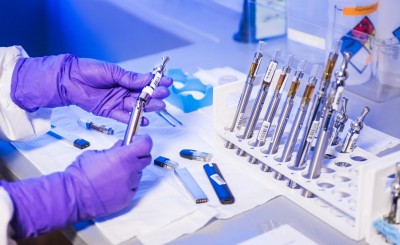Health & Medicine
Salamanders May Hold the Secret to Limb Regeneration in Humans
Catherine Griffin
First Posted: Jun 21, 2014 06:53 AM EDT
First Posted: Jun 21, 2014 06:53 AM EDT
If a salamander loses its tail or another limb, it can grow it back. This remarkable feat of regeneration allows these amphibians to better survive and escape predators. Now, scientists have taken a closer look at the secrets of regrowing body parts in order to apply it to humans.
"While humans have limited regenerative abilities, other organisms, such as the salamander, are able to regenerate an impressive repertoire of complex structures including parts of their hearts, eyes, spinal cord, tails, and they are the only adult vertebrates able to regenerate full limbs," said Max Yun, one of the researchers, in a news release.
In this case, the scientists found that the key to a salamander's unique abilities lies in something called the ERK pathway, which is a molecular pathway. More specifically, the ERK pathway must be constantly active for salamander cells to be reprogrammed and contribute to the regeneration of different body parts.
"We're thrilled to have found a critical molecular pathway, the ERK pathway, that determines whether an adult cell is able to be reprogrammed and help the regeneration processes," said Yun. "Manipulating this mechanism could contribute to therapies directed at enhancing regenerative potential of human cells."
The ERK pathway is actually a way for proteins to communicate a signal from the surface of a cell the nucleus, which contains the cell's genetic material. Currently, the scientists plan to conduct further research in order to see how this pathway is regulated during limb regeneration, and which other molecules are involved in the process. In the future, these studies could help scientists develop ways in order to help humans heal faster, which would be a huge boon for medical practice.
The findings are published in the journal Stem Cell Reports.
See Now: NASA's Juno Spacecraft's Rendezvous With Jupiter's Mammoth Cyclone




